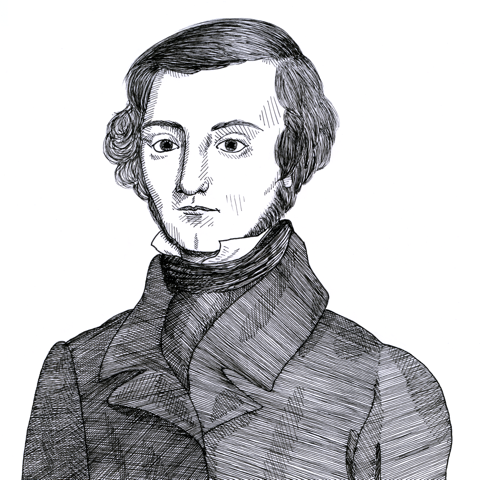Liberty Matters
Mobility versus Inequality

Over the past years, I have been asking the students in my modern political thought class to write an essay imagining what Tocqueville might have said if he visited America today. This is an enjoyable open-ended assignment that invites them to select a few major concepts from Democracy in America and apply them to our contemporary context. This year, somewhat predictably for me, many students focused on the concept of equality of conditions, the idée mère of Tocqueville’s masterpiece, and questioned to what extent Tocqueville’s notion still makes sense in a country divided between the 99 percent and the famous 1 percent. This is a timely question, and I was not surprised to find a similar question in one of Filippo Sabetti’s earlier posts: “What kind of liberty can exist in a social and political order marked by greater and growing inequality? Should we find in Tocqueville a way of addressing [Thomas] Piketty?”
I must admit that I am not sure how to answer properly this question since my knowledge of Piketty’s work is limited to the reviews I have read lately in several newspapers. I have noticed though that my students tend to have a hard time understanding (and accepting) what Tocqueville meant by equality of conditions, in spite of the clear remarks that can be found at the outset of volume one of Democracy in America. For Tocqueville, the existence of equality of conditions was not incompatible with the persistence of economic inequalities. (Marx thought differently, of course!) It might be better described as the defining trait of the new (democratic) social condition, as social mobility, or the absence of caste-like inequalities. Equality of conditions is the opposite of civil inequality, the antithesis of aristocratic or caste-based privileges. It is at the heart of what Tocqueville calls the “double revolutionThe noble will have slipped on the social ladder” that had taken place in the social condition of the Old World: “, the commoner will have risen; the one descends, the other ascends. Each half-century brings them closer together, and soon they are going to touch” (Democracy in America, I, 10).
Tocqueville was not oblivious to the existence of economic inequalities in America. True, at times he did refer to the “surprising equality” in fortunes that reigned in early 19th-century America, but he also noticed the potential for the appearance of what he called an “industrial aristocracy” in America. (He did not have good things to say about it in the chapter he devoted to this concept in volume two.) All in all, he did not believe that the existence of this type of aristocracy would be enough to call into question the future of American democracy as long as social mobility continued to exist in the New World. This led my students to examine social mobility in some detail, and the conclusions they reached were somewhat surprising. They argued, based on reliable studies, that contrary to the common perception, overall social mobility in America has not decreased substantially in the last 50 years in spite of the non-negligible growth of economic inequality. I am aware that some might want to question this point, but there is evidence to support it, and we should critically discuss it.
Copyright and Fair Use Statement
“Liberty Matters” is the copyright of Liberty Fund, Inc. This material is put on line to further the educational goals of Liberty Fund, Inc. These essays and responses may be quoted and otherwise used under “fair use” provisions for educational and academic purposes. To reprint these essays in course booklets requires the prior permission of Liberty Fund, Inc. Please contact oll@libertyfund.org if you have any questions.